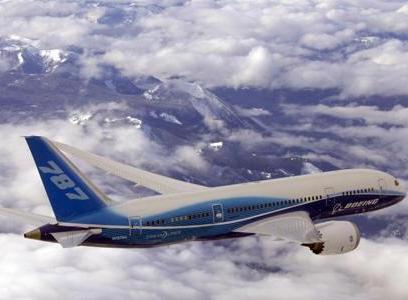
| NEWSROOM |
|
|
 |
|
|
|
|
|
|||
|
By Mike Mitchell |
||||
 |
February 23, 2010
- Randy Tinseth, Vice President, marketing for Boeing Commercial
Airplanes stated on
“Randy's Journal” “The first 787 - ZA001 returned from Moses Lake Sunday
morning after landing there on Friday. "Our
flight test pilots had touched down at the
“We located
replacement parts and then got the parts and the right crew to |
|||
|
“The airplane is going through the maintenance and pre-flight work that
would have been done had it arrived back at Boeing Field on Friday
evening. I can tell you that ZA001 will soon return to flutter testing.
It’s a great tribute to the team that they completed the analysis,
maintenance activity and testing in such short order. This is what
happens during flight testing - and our plan accommodates such events.
We deal with issues and we keep going”.
The fourth Boeing Dreamlifter – the final airplane in the fleet of
specially modified 747-400s – entered service on the 16th. Dreamlifters
transport the large composite structures of the 787 Dreamliner from
partners around the world to
Boeing on the 3rd publicly unveiled the first 787 Dreamliner to feature
interior components. The third flight test airplane, ZA003, has a
partial interior that provides a glimpse into the new flying experience
the airplane will offer. Configured for flight-testing purposes, the
interior includes instrumentation racks, flight-test equipment and
workstations for engineers. |
||||
|
"This airplane is
specifically configured to test the passenger experience elements of the
airplane," said Tom Galantowicz, director of 787 Interiors, Commercial
Airplanes. "Our engineers and flight-test team use a disciplined process
to certify the various elements of the interior and conduct
airplane-level verifications."
The interior
includes 135 seats, multiple lavatories and two crew rests. Certifying
the interior components involves analyses and testing of the lighting,
lavatories, stowage bins, dimmable windows and galleys. Passengers will
be welcomed onto the 787 by sweeping arches, dynamic lighting, larger
lavatories, more spacious luggage bins and electronic window shades
whose transparency they can change during flight.
Boeing on the 2nd
moved the 787 Dreamliner fatigue test airframe to its structural test
rig. Test set up is expected to begin immediately, with tests commencing
midyear.
On January 15th
Boeing completed initial airworthiness testing on the 787 Dreamliner.
This milestone will enable more crew members to take part in flights and
will allow more airplanes to join the flight test program.
Since the first
flight in mid-December, the program has conducted several flights,
achieving several key accomplishments. Pilots have taken the airplane to
an altitude of 30,000 feet (9,144 m) and a speed of Mach 0.65. Nearly 60
hours of flying have been completed. Initial stall tests and other
dynamic maneuvers have been run, as well as an extensive check-out of
the airplane's systems. Six different pilots have been behind the
controls of the 787. "The pilots have told me the results we are seeing in flight match their expectations and the simulations we've run. That's a real tribute to Boeing's expertise and the international team that helped develop and build the airplane," said Fancher. Flight testing will continue in the months ahead. First delivery is planned for the fourth quarter of this year. |
| ©AvStop
Online Magazine
Contact
Us
Return To News
|
|